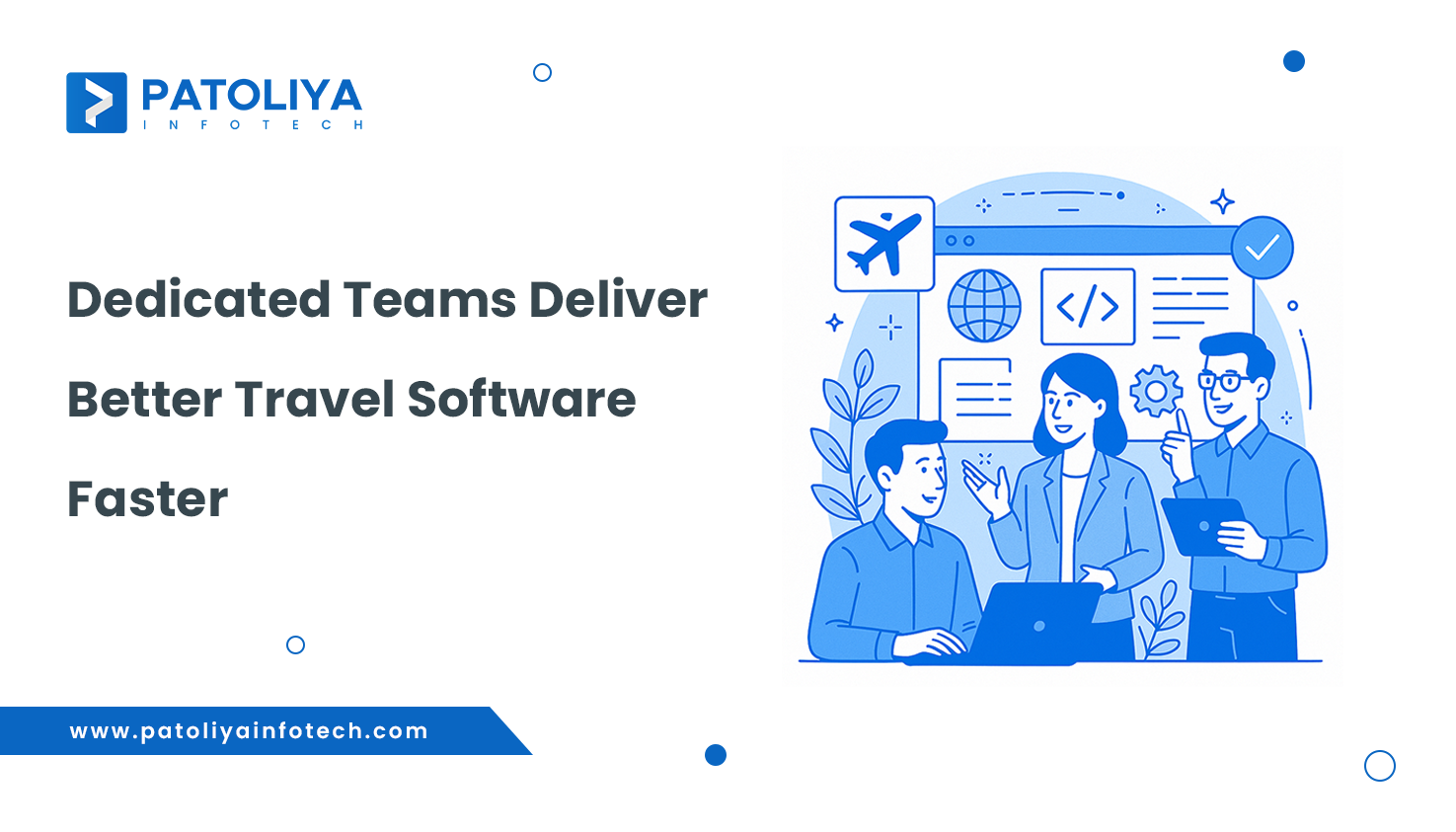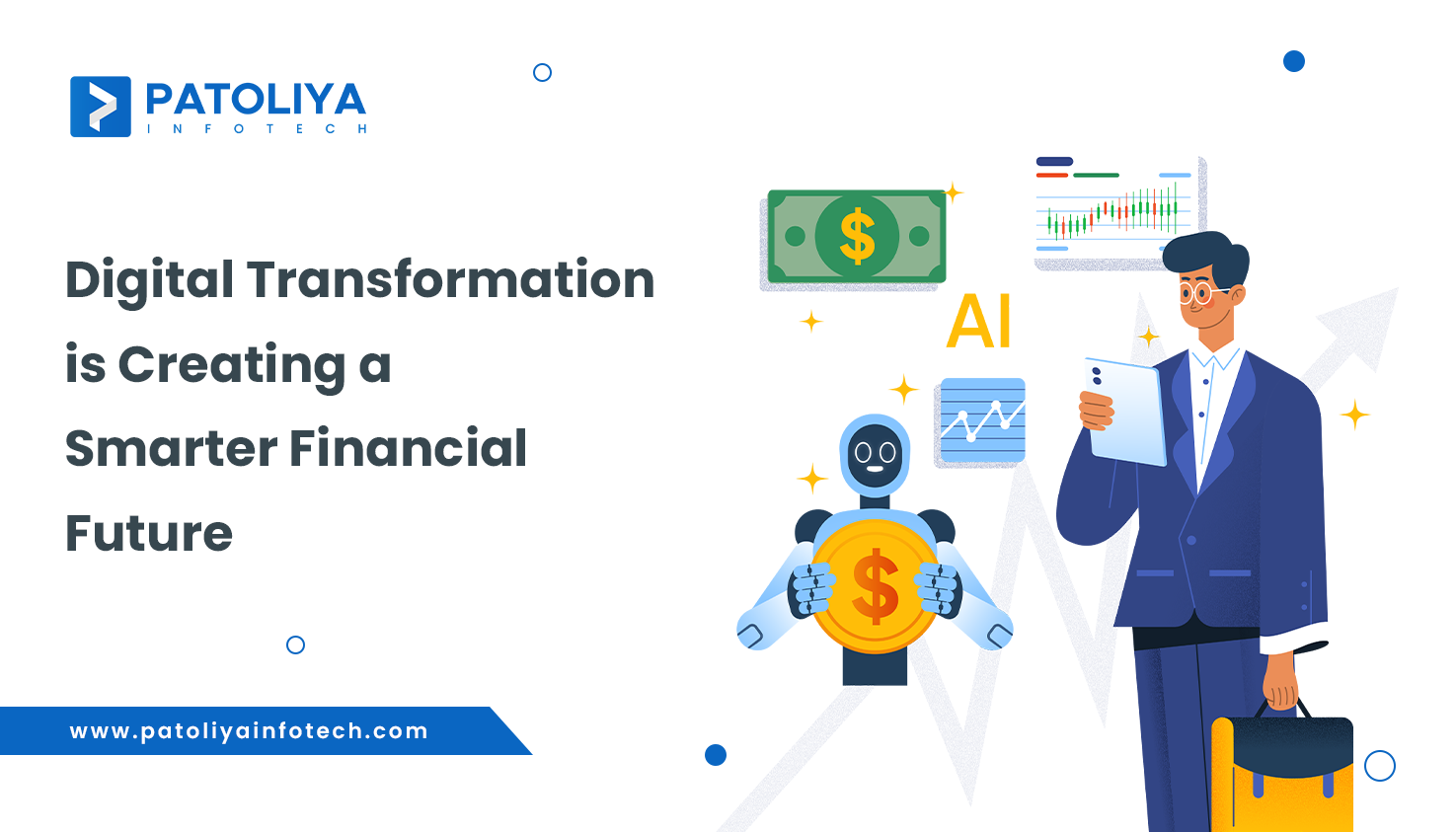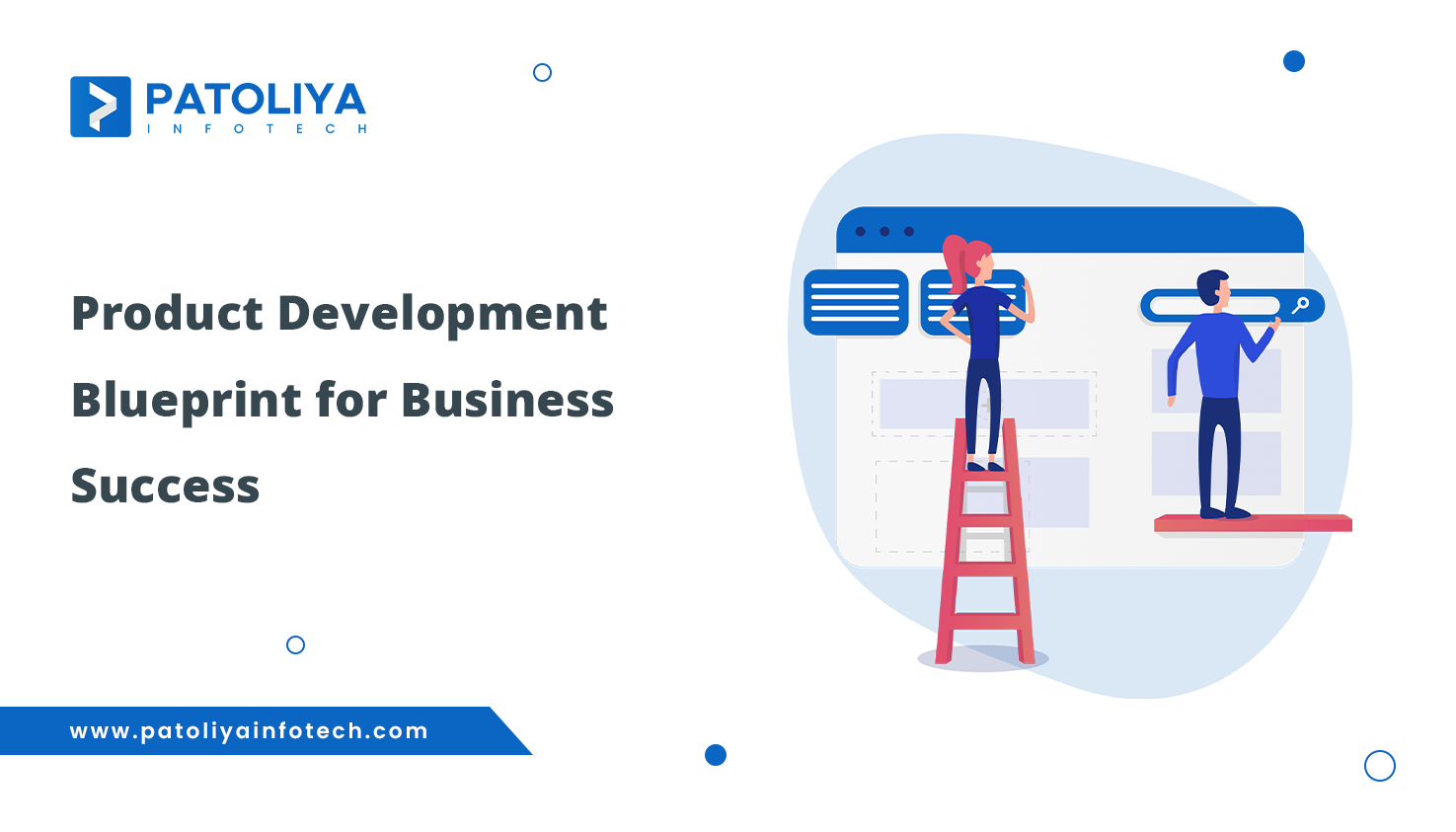Custom Property Management Software Development for Real Estate in 2025
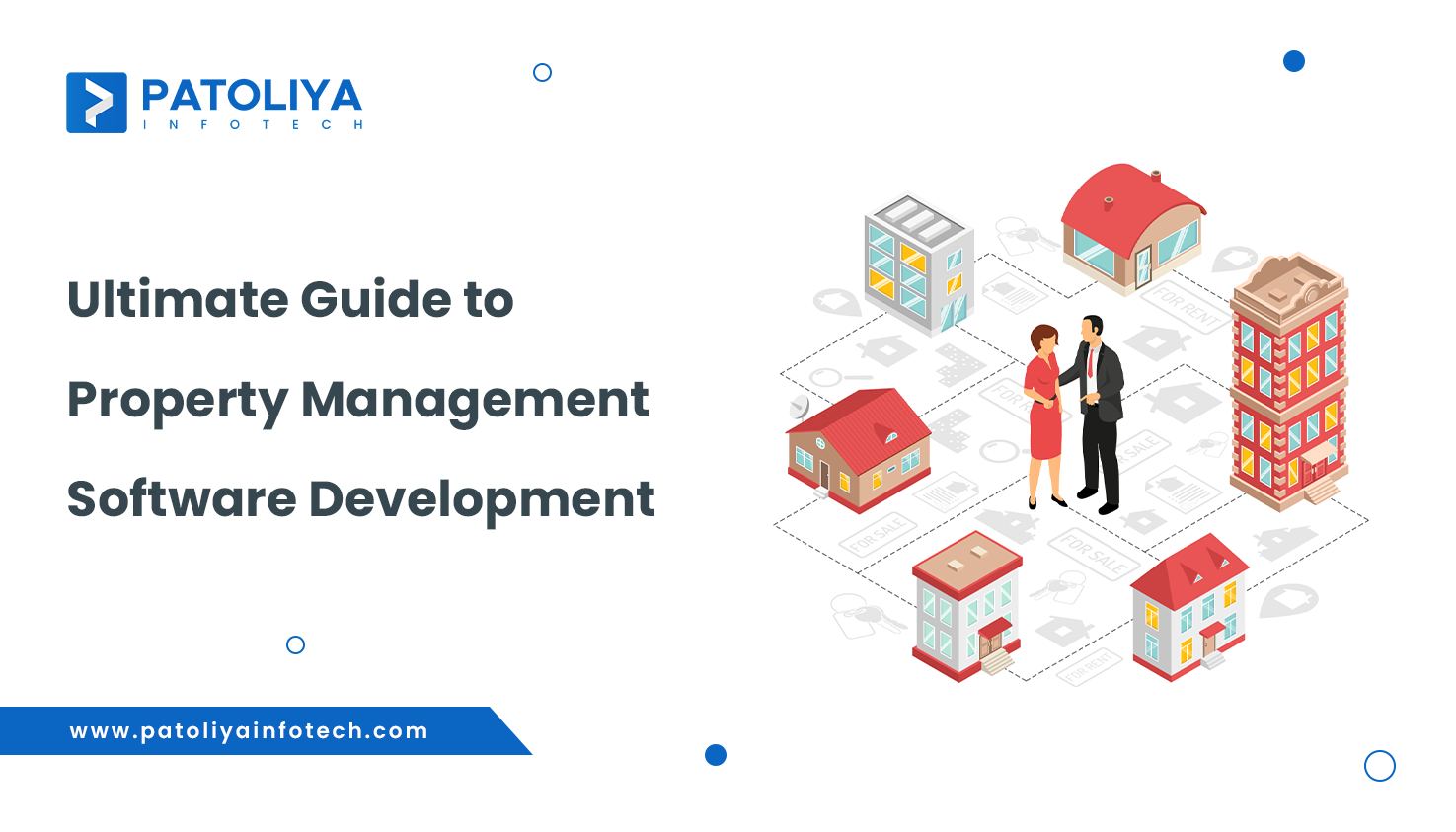
Table of Contents
The real estate industry is undergoing a major transformation, aided by the fast adoption of property control software. This virtual change is more than a trend; it is a massive movement that is transforming asset management practices around the world.
The global property control software program market is expected to be worth USD 26.96 billion in 2025 and will reach USD 78.65 billion by 2037, increasing at a CAGR of approximately 9.1%. This rise is powered by using a number of important factors: (Src)
- Cloud-Based Solutions: The introduction of cloud computing and software-as-a-service (SaaS) platforms is changing property management, giving scalability and real-time access.
- Smart Real Estate Infrastructure: The development of intelligent buildings and the integration of IoT devices improve operational efficiency and tenant experiences.
- AI and Automation: Artificial Intelligence is streamlining activities such as recruit series, maintenance scheduling, and tenant interactions, leading to greater productivity and fee savings.
North America leads the market in terms of regional share, because to early technological adoption and a robust real estate sector. However, Asia-Pacific is becoming the fastest-growing area, thanks to rising urbanization and greater real estate investment.
As the demand for green, scalable, and intelligent asset management solutions continues to climb, investing in custom software development is becoming increasingly important for real estate organizations looking to remain competitive and satisfy changing market demands.
What Is Property Management Software?
Property management software is a digital system that simplifies and automates the daily operations of managing residential, commercial, or industrial real estate. It serves as an established portal for all aspects of property management, from tracking rent payments to managing maintenance requests and tenant contacts.
Real-World Applications
In practical terms, landlords, property managers, and real estate agents utilize property management software to:
- Rent can be collected online with automatic reminders and tracking of late fees.
- Track maintenance issues and allocate assignments to contractors or employees.
- Manage leases, including renewals and document storage.
- Screen renters, run background checks, and handle applications.
- Create financial reports to improve decision-making.
- Communicate effortlessly with tenants using mobile apps or portals.
These technologies not only increase efficiency but also tenant satisfaction by delivering faster responses and more open communication.
Property Management Software vs. Real Estate CRM: What's the Difference?
Property management systems (PMS) and real estate Customer Relationship Management (CRM) solutions serve diverse targets, despite their superficial similarities.
| Feature | Property Management Software (PMS) | Real Estate CRM |
| Primary Use | Managing rental operations | Managing sales leads and client relationships |
| Users | Landlords, property managers | Real estate agents, sales teams |
| Key Functions | Rent collection, maintenance, tenant portals | Lead tracking, email campaigns, follow-ups |
| Focus | Operational efficiency | Sales conversion and client retention |
Basically, a PMS is for dealing with properties, but a CRM is for dealing with people and sales. Real estate companies frequently employ both systems to cover the entire lifespan, from obtaining clients to managing the homes they purchase.

Who Needs Property Management Software?
Property control software isn't just for major corporations; it's a game-changing tool for anyone interested in real estate asset management. Whether you manage a few devices or a large portfolio, this generation will help you optimize operations, improve tenant satisfaction, and maximize returns.
Real Estate Investors
Investors with rising portfolios require transparency and control over their investments. Property management software provides established dashboards, financial tracking, and automated reporting, enabling investors to make data-driven decisions while avoiding day-to-day headaches.
Property Management Companies
Companies that manage several properties or clients must be efficient. A strong property management system automates rent collecting, maintenance operations, and lease management. It also enhances team communication and provides uniform service across all units.
Landlords and Leasing Agencies
Independent landlords and leasing agencies can extremely benefit from automating everyday tasks such as rent reminders, lease renewals, and document storage. With the correct tools, even a single landlord can operate with the same professionalism and efficiency as a larger agency.
Co-Working and Co-Living Space Managers
The flexible living and working trend is growing, and managing these spaces presents new issues, such as dynamic tenant turnover, flexible lease, and shared facilities. In today's instances, property management software simplifies payments, space reservations, and community communication.
Core Benefits of Property Management Software
Efficiency and intelligence have become essential in today's competitive and fast-paced real estate industry. Property management software provides a powerful set of benefits that go beyond convenience: it allows property professionals to scale smarter, communicate more effectively, and operate with confidence.
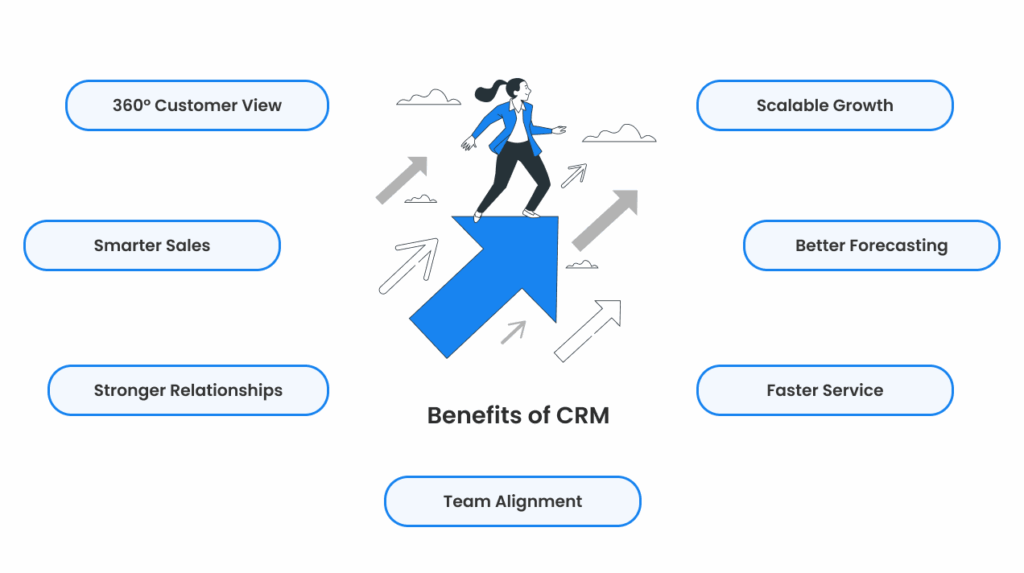
Efficiency Through Automation
Rent collection, lease renewals, maintenance requests, and document management are all manual procedures that consume important time. These activities are automated using property management software, eliminating errors, saving time, and freeing up your team to focus on more growth-oriented responsibilities.
Centralized Data and Analytics
All of your property data, tenant records, financials, and performance measures are stored in a single centralized system. This not only improves accuracy, but it also provides access to advanced analytics. From analyzing occupancy rates to estimating revenue, having data at your fingertips allows you to make more informed, faster decisions.
Improved Tenant Communication
Effective communication leads to increased tenant satisfaction and retention. Tenant portals or mobile applications are frequently integrated into property management platforms, allowing renters to pay rent, submit maintenance issues, and get vital updates in real time. What is the end result? Fewer misunderstandings and happier renters.
Enhanced Profitability and Scalability
Property management software improves your bottom line by enhancing operations and decreasing manual work. It also creates the groundwork for scaling, allowing you to handle more properties with no corresponding increase in workload or manpower requirements. Whether you're handling 5 or 500 units, expansion becomes much more manageable.
Types of Property Management Systems (With Use Cases)
Not all property management software is developed similar; different property types have different requirements, workflows, and tenants. That is why there are particular approaches for different industries of real estate. Here's a breakdown of the key types and how they're applied in the actual world:
Residential Property Management Software
A landlord who oversees a portfolio of rental units or single-family houses.
These systems handle lease monitoring, rent collection, tenant screening, and maintenance, all of which are suited to residential needs. Many include tenant portals, automated payment reminders, and communication tools to help landlords and tenants connect with greater effectiveness.
Commercial Property Management Software
A real estate company that manages office spaces, shopping malls, or mixed-use buildings.
Commercial properties have more complicated lease periods, CAM costs, and billing structures. This program supports the management of lease agreements, monitoring building performance, tracking tenant duties, and ensuring contract compliance.
Hotel & Hospitality Property Systems
A boutique hotel or a short-term rental operator.
These systems are primarily concerned with reservations, room availability, visitor check-ins and outs, billing, and service management. Many integrate with booking engines and POS systems, making them critical for running hospitality operations smoothly.
Industrial Real Estate Management Platforms
A logistics company or investor that manages warehouses and manufacturing sites.
These technologies make it possible to track long-term leases, monitor space utilization, and maintain resources. Industrial contracts frequently interface with supply chain or inventory systems due to their complexity.
HOA / Community Management Systems
A homeowner's association that oversees a residential community or gated community.
HOA software allows for fee collecting, member communication, community event scheduling, rule enforcement, and maintenance coordination. It promotes seamless management and transparency between board members and residents.
Hybrid and Custom Solutions
A real estate company that handles a variety of property kinds (residential, commercial, co-living, etc.).
Hybrid platforms or custom-built systems combine elements from multiple categories, providing flexibility and scalability. Custom development is suitable for companies that have unique workflows, branding needs, or integration requirements.
Key Features That Matter in 2025
As the real estate business becomes more tech-savvy, property management software will face higher expectations in 2025 than ever before. Modern solutions are more than just digital filing cabinets; they're advanced platforms that promote productivity, improve tenant experience, and facilitate smart decision-making. Here are the must-have qualities defining the future of property management:
Property Listing & Tenant Onboarding
Managers can use integrated listing tools to directly publish available units on key platforms. When combined with automated tenant onboarding, which includes applications, background checks, and digital lease signing, the leasing process becomes smooth and efficient.
Lease Lifecycle Automation
Every stage of the leasing process, from lease formation and e-signature to renewal alerts and termination notices, is automatable. This minimizes paperwork, errors, and makes sure consistent compliance.
Maintenance & Service Request Management
Tenants can report maintenance issues using mobile apps or portals, which are then automatically routed to the appropriate vendor or staff. This leads to faster response times, greater communication, and increased tenant satisfaction.
Integrated Accounting & Billing
Built-in accounting capabilities make it easier to collect rent, track expenses, record taxes, and pay vendors all from the same platform. Real-time financial visibility improves budgeting and forecasting.
Legal Compliance and Documentation
Modern systems follow local and national housing restrictions. They also offer document storage, audit trails, and automatic reminders to maintain legal compliance at all sites.
CRM and Communication Tools
Effective communication technologies, such as email, SMS, and in-app messaging, increase engagement with both tenants and prospects. CRM capabilities enable you to log interactions, preferences, and follow-ups in order to create long-term partnerships.
Reporting, Analytics & Dashboards
Custom dashboards and automated reports provide detailed information on occupancy rates, rental income, maintenance expenditures, and more. This enables managers to make better, data-driven decisions.
Mobile Accessibility & Self-Service Portals
Mobile-friendly platforms with tenant and owner interfaces provide 24-hour self-service for paying rent, logging service requests, and accessing documents. It increases convenience and reduces routine inquiries.
AI-Powered Tenant Screening & Market Analysis
AI solutions can now help with predictive tenant screening, checking risk profiles beyond typical credit checks. Meanwhile, real-time market data enables property owners to price units competitively and uncover expansion prospects.
Integration with IoT Devices (Smart Locks, Thermostats)
Smart home integration is no longer just a luxury. Smart locks, security systems, and energy-efficient thermostats are examples of IoT innovations that improve tenant convenience while lowering operational costs—all while being controlled via the property management platform.
Must-Have Modules for a Complete Property Management System
A comprehensive property management software system requires more than simply a visually appealing interface to truly empower both property managers and tenants. It requires the usage of purpose-built modules to speed up operations, improve visibility, and assure a consistent user experience. The two fundamental panels that serve as the basis for any modern system are listed below:
Admin Panel
The admin panel is the system's operational brain, allowing property managers, landlords, and support teams to oversee and control everything from one spot.
Key Features:
- User Roles & Access Control
Set distinct authorization levels for administrators, personnel, accountants, and agents to ensure data security and task efficiency. - Property & Financial Overview
Access an extensive summary of all properties under management, including rent collecting, spending monitoring, and payment status. - Analytics Dashboard
Managers can use visual insights on occupancy rates, cash flow, lease expirations, and other factors to make data-driven choices. - Ticketing and Support Management
A centralized system for tracking and resolving tenant inquiries, maintenance issues, and corporate communications.
Tenant/User Panel
The tenant or user panel is intended to provide a smooth self-service experience. It simplifies daily activities and improves communication between renters and management.
Key Features:
- Lease Signing and Payment
Tenants can access, sign, and manage lease agreements electronically, as well as make rent payments using secure internet channels. - Request Maintenance or Services
You may easily submit maintenance requests, follow progress, and engage with service providers right from the platform. - Notifications and Communication
Receive automated reminders, announcements, and direct messaging in one place for improved transparency. - Document and Record Access
Secure access to payment history, lease agreements, community policies, and other vital papers.
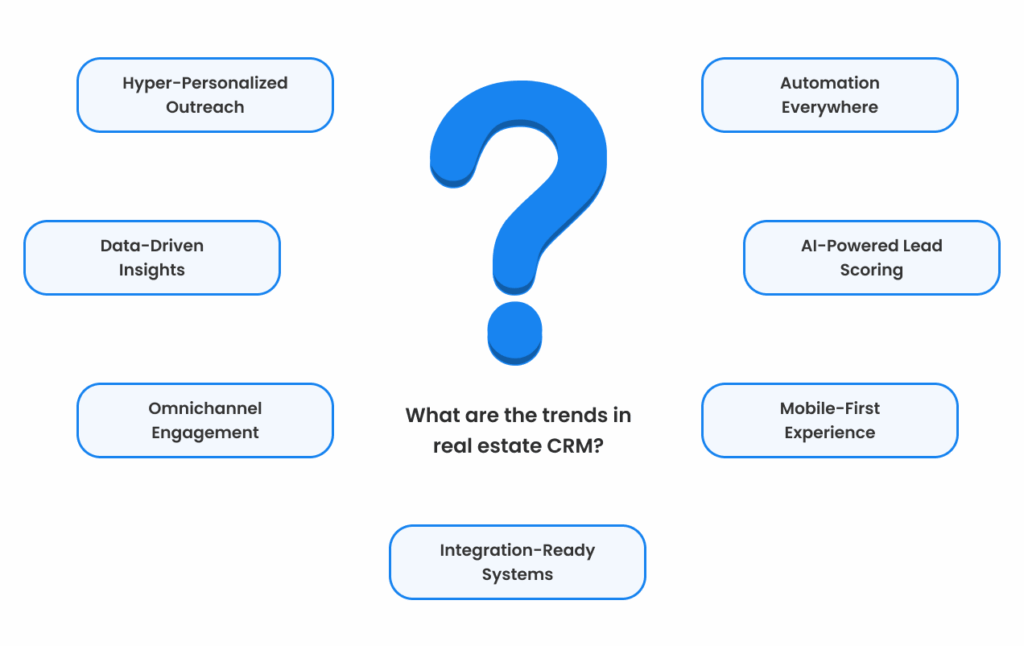
Emerging Trends in Property Management Software (2025+)
The property management landscape evolves together with technology. Forward-thinking real estate companies are embracing cutting-edge solutions that go beyond simple automation to change the way properties are sold, maintained, and managed. Here are the leading developing trends affecting the future of property management software:
AI & Machine Learning for Predictive Maintenance
Reactive repairs are no more. AI-powered systems may now monitor usage patterns, equipment behavior, and historical data to identify maintenance requirements before they exist, decreasing downtime, increasing asset life, and saving long-term expenses.
Blockchain for Secure Transactions
Blockchain is being used to create transparent, safe, and unchangeable records, especially for legal documents, payment histories, and lease agreements. As it establishes audits and verification, it builds confidence between vendors, landlords, and renters.
AR/VR for Virtual Property Tours
Properties are being viewed differently thanks to augmented and virtual reality. Units may now be remotely inspected by potential renters and purchasers from any location. Time is saved, the audience is expanded, and your property marketing strategy is given an innovative twist.
Voice-Based Interfaces
Smart assistants such as Alexa and Google Assistant are being integrated into property systems to provide voice-activated commands for operations such as checking payment status, making service requests, and obtaining property updates, providing consumers with full hands-free ease.
Smart Home and IoT Integrations
Property management software now easily integrates smart lighting, security, locks, and thermostats. These IoT-enabled technologies give managers and renters remote control choices, boost energy efficiency, and enhance tenant comfort.
Green Tech & Sustainability Tracking
Sustainability is now a must. Property management software is now including green technology elements for tracking energy use, carbon emissions, and water use. These solutions help buildings comply with environmental requirements and promote eco-friendly operations.
How to Build a Property Management Software: Step-by-Step
Creating a solid, scalable system requires careful planning and execution, but building your own property management software may revolutionize your real estate company. A straightforward, step-by-step strategy to guide you through the procedure is provided here:
Step 1: Market Research & Competitor Analysis
Start by thoroughly researching the state of the market. Determine the advantages and disadvantages of current solutions as well as the particular problems that your target consumers face. This style of seeing things will help you see opportunities and avoid making the same mistakes twice.
Step 2: Defining Your Unique Value Proposition
Start by thoroughly researching the state of the market. Determine the advantages and disadvantages of current solutions as well as the particular problems that your target consumers face. This style of seeing things will help you see opportunities and avoid making the same mistakes twice.
Step 3: Choosing the Right Tech Stack
Selecting the best technology for the frontend, backend, cloud infrastructure, and database is important. Development speed, scalability, security, and compatibility with third-birthday celebration connectors such fee gateways and Internet of Things devices should all be explored.
Step 4: UX/UI Design Best Practices
The user experience of your program has the power to make or break it. Provide intuitive user interfaces that help property managers and tenants navigate complex procedures. Make simple navigation and mobile-friendly design your top goals to boost adoption rates.
Step 5: Backend and Frontend Development
Your improvement team may build the system after they have design prototypes. While the frontend provides a continuous interface for users to interact with, the backend should handle integrations, corporate good judgment, and records processing.
Step 6: API Integrations (CRM, Payment, IoT, etc.)
Improve the functionality of your platform by including necessary third-party services. These might include IoT device management for smart buildings, payment processors for rent collecting, and CRM systems for managing customers.
Step 7: QA Testing and User Feedback
To guarantee that your software is dependable and free of bugs, extensive testing is necessary. To enhance usability, adjust functionality, and make sure the system satisfies practical demands, incorporate user feedback frequently and early.
Step 8: Deployment, Hosting & DevOps
Select a dependable hosting environment that offers strong security and expandability. Create pipelines for continuous integration and delivery to accelerate upcoming changes and ensure system availability.
Step 9: Ongoing Support & Future Updates
Just launching your software is the first step. Maintaining your platform competitive and in line with changing market expectations requires constant support, frequent updates, and feature improvements.

Cost of Developing Property Management Software in 2025
Depending on the features and complexity of the solution, the value of expanding property control software in 2025 varies greatly. Prices can also start in the lower range for a core platform with essential features, but advanced systems with AI capabilities, IoT connectors, and enough automation can perform far better.
The overall cost is influenced by a number of factors. Growing an intuitive and appealing user experience requires expert designers and iterative development, which is what UX/UI layout does. Pricing is also impacted by the tech stack preference since certain technologies need more time or specialized skills to build.
Backend complexity, information management, and security features support every extra budget level, especially if your application is required to handle huge real estate portfolios or high transaction volumes. Integrations with third-party APIs—like payment gateways, CRMs, and Internet of Things devices—are important to contemporary, all-inclusive systems, despite the fact that they may increase development costs.
The size and location of your development team may have a big impact on pricing; while offshore teams may save money, they may also need more cooperation. Frequent hosting costs and ongoing maintenance ensure that your software program runs properly and is updated with new features and security fixes.
Hidden expenses, unanticipated feature changes, and scope creep should all be kept in mind since, if not well watched, they may increase your price range. Setting defined goals for your business and doing extensive planning are important for avoiding these pitfalls and keeping your development challenge financially on track.
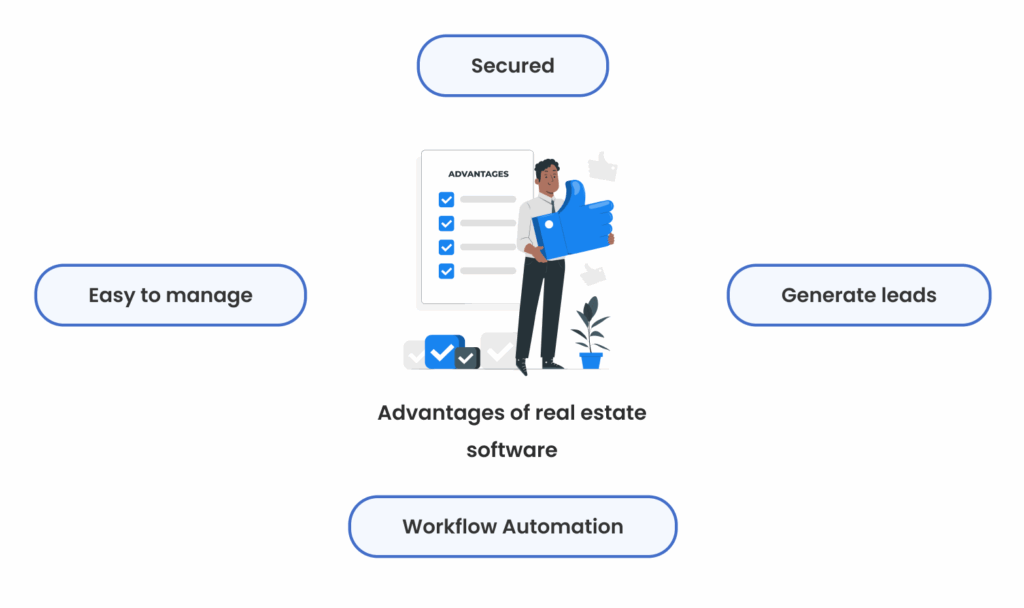
Common Development Challenges and How to Overcome Them
Developing property management software is not without its difficulties.
From managing sensitive tenant data to guaranteeing performance and scalability, every little detail counts. As your user base and real estate holdings expand, your platform has to be able to manage heavy data loads and user activity without experiencing any lag or crashes. This calls for creative creation, stress testing, and intelligent architecture.
There is no negotiating data privacy.
With laws like the CCPA and GDPR in effect, handling data securely is important. To maintain compliance and foster confidence, consider strong encryption, reliable authentication, and frequent audits.
Integrating legacy systems? Difficult, but achievable.
Outdated tools are still used by many real estate companies. In order to bridge the gap and guarantee compatibility with contemporary solutions, seamless integration frequently calls for specialized APIs and middleware.
Remember cross-platform functionality as well.
Consumers anticipate seamless experiences on smartphones, tablets, and PCs. This includes consistent performance across devices and operating systems as well as responsive design.
Real Estate + AI: Future-Proofing Property Management
Artificial intelligence is quickly changing the asset management landscape by providing useful tools that help organizations remain ahead of the curve. Artificial intelligence (AI)-driven price trends and lease estimates are among the most interesting uses; they use market trends, demand, and similar properties to generate accurate and flexible pricing recommendations. This makes it easier for asset managers to maximize condo profits even during the final aggressive period.
Other game-changers include chatbot assistance and virtual leasing merchants. These AI-powered helpers can handle routine tenant questions, schedule showings, and even help prospects with the lease process around-the-clock, freeing up human marketers to focus on more expensive tasks.
AI plays an important part in threat scoring and fraud detection as well. AI systems can save financial losses and jail troubles by identifying possible fraud or unstable tenants before rents are signed by analyzing utility statistics, charge histories, and behavioral patterns.
AI is used in predictive renovation scheduling to predict when a device or property feature may break down or need maintenance. By avoiding problems before they increase, this proactive approach saves maintenance costs, minimizes downtime, and increases tenant satisfaction.
When taken as a whole, these AI advancements are not only improving asset control performance but also securing the industry's future for years to come.
When Should You Build vs. Buy Property Management Software?
The option of whether to purchase an off-the-shelf solution or develop bespoke property management software is essential and is based on your company's needs and available resources. Fast implementation, fewer upfront costs, and established functioning are common benefits of off-the-shelf software. It could not, however, have the necessary functionality or adaptability for your company, which might limit scalability or lead to workarounds that prevent operations.
At the same time, custom creation gives you total control and the opportunity to customize the system to fit your particular integrations, branding, and processes. Due to its excellent integration with your company strategy, this technique can yield long-term benefit, even though it usually involves a bigger initial time and financial commitment.
When you have highly specific procedures, need full integration with current technologies, or need to create customized workflows for following regional legislation, customization becomes essential.
Making the move to a professional property management platform, whether purchased or developed, could dramatically improve productivity, data integrity, and the tenant experience for many companies moving from antiquated legacy systems or simple tools like Excel spreadsheets. This shift may be made more seamless and effective by carefully planning a migration strategy that includes data cleaning and organized rollouts.
Conclusion: Is Property Management Software Your Next Smart Investment?
As assets management software has grown in popularity, the real estate industry is undergoing some major changes. Groups need to adjust in order to be competitive as the industry expands quickly and generation develops. Modern solutions improve efficiency, tenant satisfaction, and operational insight; they are more than just instruments for basic tasks.
AI, IoT integration, and blockchain are some of the emerging technologies that are shaping the future of property control by facilitating dependable transactions, predictive maintenance, and more intelligent decision-making. In addition to simplifying procedures, these improvements also safeguard property control against changing market needs and regulatory difficulties.
Building your own software versus buying off-the-shelf solutions mostly depends on the size, demands, and desired degree of flexibility of your company. Although ready-made alternatives allow for rapid adoption, bespoke augmentation provides functionality that was specifically developed to satisfy certain procedures and legal needs.

